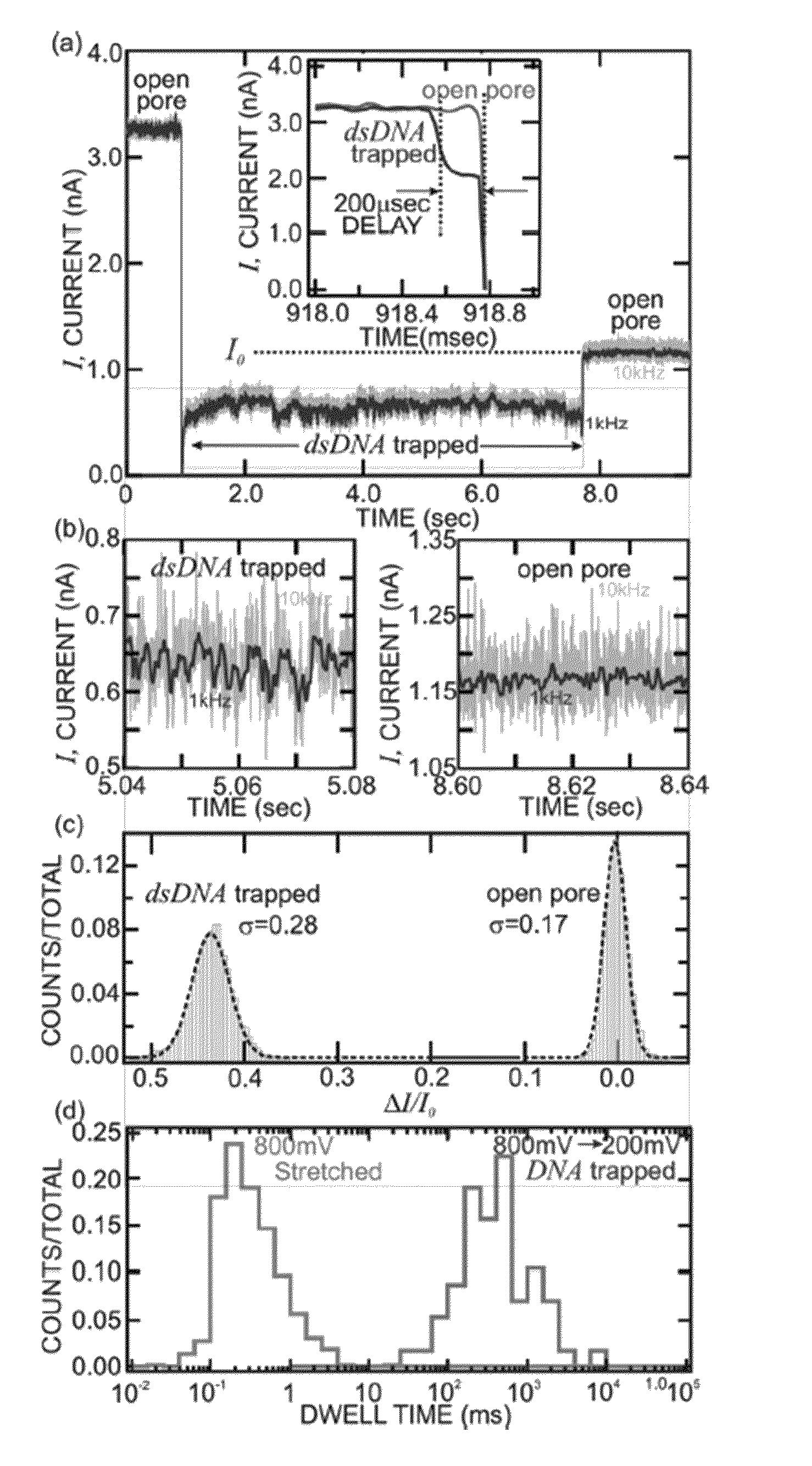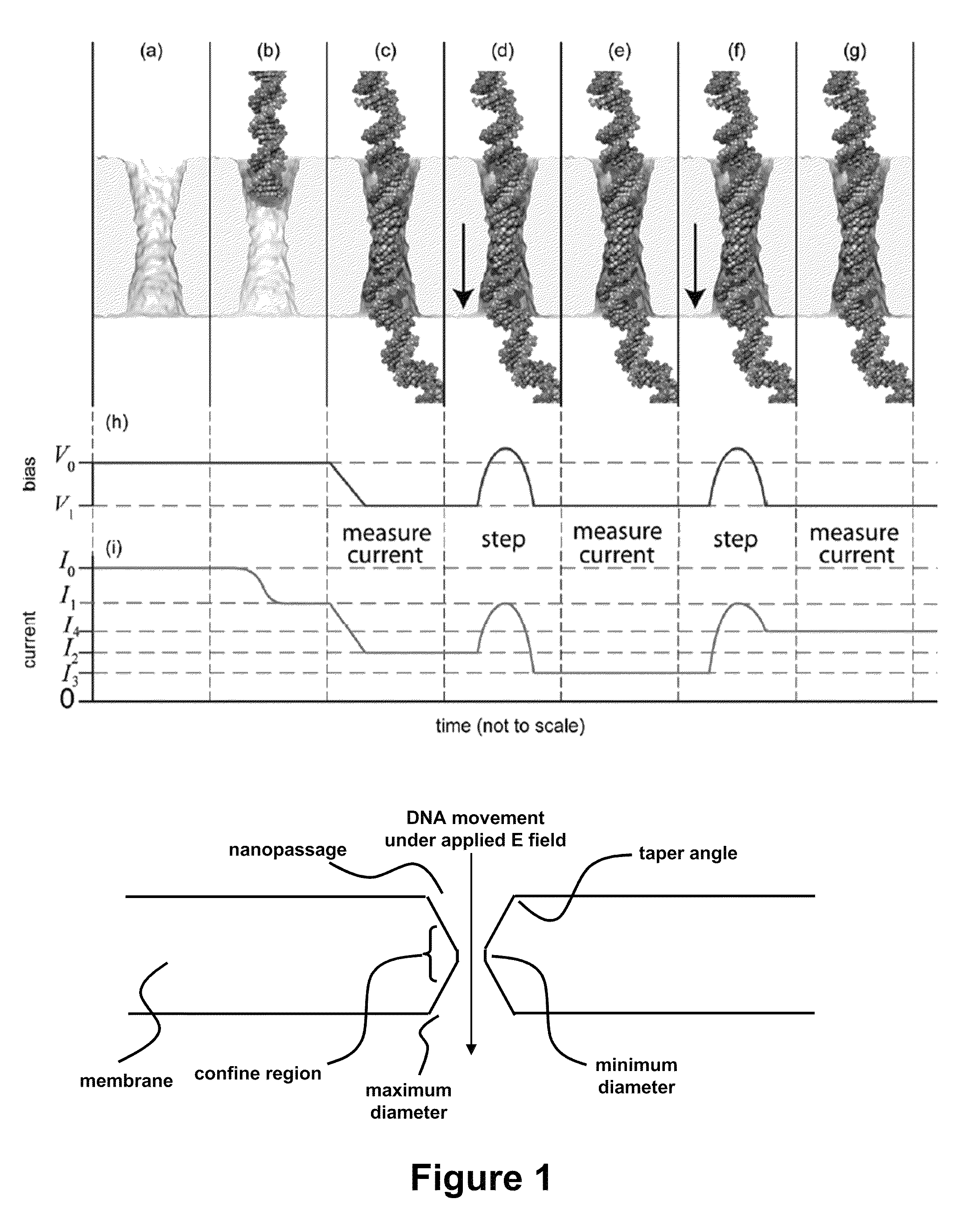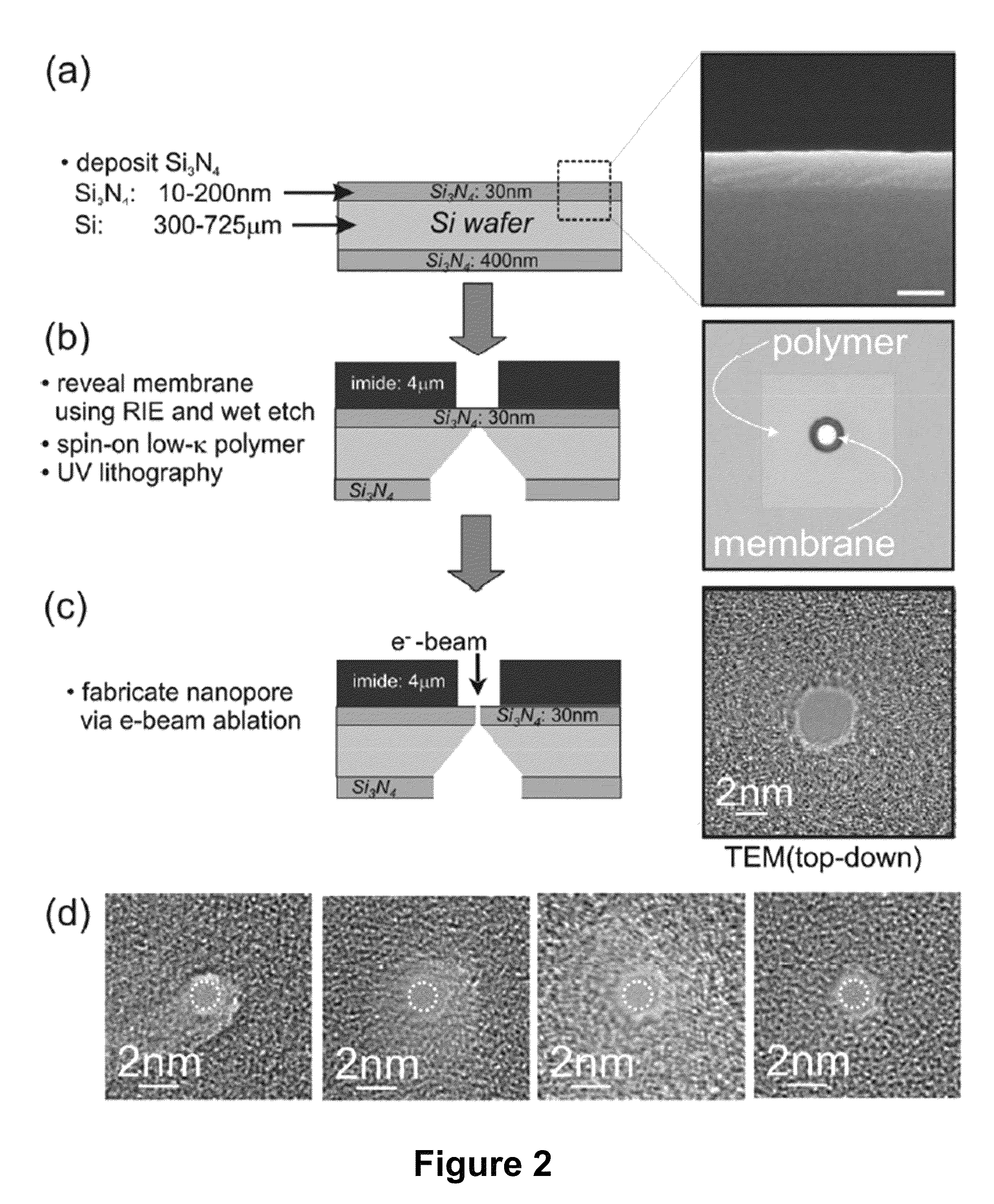Characterizing stretched polynucleotides in a synthetic nanopassage
a polynucleotide and nanopassage technology, applied in the field of synthetic nanopassage characterization of polynucleotides, can solve the problems of unable to escape the confine region, trapped polynucleotides within the confine region, etc., and achieve exquisite single molecule sensitivity, long read length, and high speed
- Summary
- Abstract
- Description
- Claims
- Application Information
AI Technical Summary
Benefits of technology
Problems solved by technology
Method used
Image
Examples
example 1
Synthetic Nanopore for Sequencing Double-Stranded DNA
[0068]Sequencing a single molecule of DNA extracts the maximum amount of information from a minimum of material and pre-processing. When paired with a high-throughput and low cost sequencing instrument, it could change the flow of genomic data from a trickle to a deluge—thrusting genomics within the grasp of personalized medicine. Provided in this example is a nanopore instrument that sequences the genome in a cost effective manner, currently for less than $1000. Nanopore sequencing relies on the electric signal that develops when a single, polyanionic DNA molecule is forced by an electric field to translocate through a pore. The nanopore sequencing concept is revolutionary because it combines the potential for long read lengths (>5 kbp) with high speed (1 bp / 10 ns), while obviating the need for costly and error-prone procedures like PCR amplification due to the exquisite single molecule sensitivity. However, high fidelity reads d...
example 2
Base Discrimination
[0115]It is now possible to trap a single molecule of double-stranded DNA (dsDNA), by stretching it using a nanopore, smaller in diameter than the double helix, in a solid-state membrane. By applying an electric force larger than the threshold for stretching, dsDNA can be impelled through the pore. Once a current blockade associated with a translocating molecule is detected, the electric field in the pore is switched in an interval less than the translocation time to a value below the threshold for stretching. This leaves the dsDNA stretched in the pore constriction with the base-pairs tilted, while the B-form canonical structure is preserved outside the pore. In this configuration, the translocation velocity is substantially reduced from 1 bp / 10 ns to ˜1 bp / 2 ms in the extreme, which facilitates high fidelity reads, allowing us to discriminate between A-T and C-G base-pairs. Using Molecular Dynamics simulations to extrapolate to smaller diameters and higher salt ...
PUM
| Property | Measurement | Unit |
|---|---|---|
| cross-sectional area | aaaaa | aaaaa |
| diameter | aaaaa | aaaaa |
| diameter | aaaaa | aaaaa |
Abstract
Description
Claims
Application Information
 Login to View More
Login to View More - R&D
- Intellectual Property
- Life Sciences
- Materials
- Tech Scout
- Unparalleled Data Quality
- Higher Quality Content
- 60% Fewer Hallucinations
Browse by: Latest US Patents, China's latest patents, Technical Efficacy Thesaurus, Application Domain, Technology Topic, Popular Technical Reports.
© 2025 PatSnap. All rights reserved.Legal|Privacy policy|Modern Slavery Act Transparency Statement|Sitemap|About US| Contact US: help@patsnap.com



